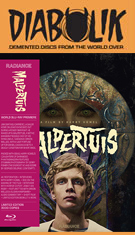
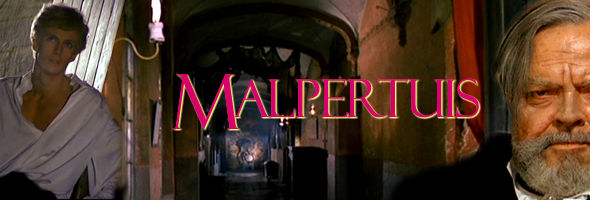
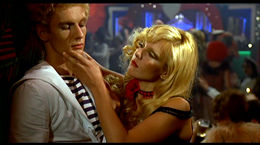 Harry
Harry 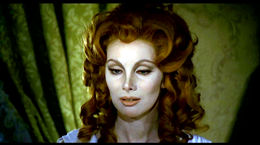 Kümel was fresh off the international success of his dazzling Daughters of Darkness, and an eye-popping international cast headlined by Orson Welles promised plenty of marquee value. Unfortunately the finished product seemed even more cursed than the titular house, as the dream-like and often inscrutable film met with a baffled reaction at Cannes (in a cut the director disavowed) and quickly sank into oblivion. However, students of both horror and arthouse cinema continued mentioning the film over the next few decades, though few actually had the chance to see it; finally a restored director's cut was assembled through European funding in the early 2000s and, thanks to repertory screenings, finally restored the reputation of this long-lost Eurocult curio.
Kümel was fresh off the international success of his dazzling Daughters of Darkness, and an eye-popping international cast headlined by Orson Welles promised plenty of marquee value. Unfortunately the finished product seemed even more cursed than the titular house, as the dream-like and often inscrutable film met with a baffled reaction at Cannes (in a cut the director disavowed) and quickly sank into oblivion. However, students of both horror and arthouse cinema continued mentioning the film over the next few decades, though few actually had the chance to see it; finally a restored director's cut was assembled through European funding in the early 2000s and, thanks to repertory screenings, finally restored the reputation of this long-lost Eurocult curio.
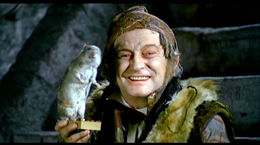 finds his own fate bound with everyone else in the house as the sinister old man's inheritance carries repercussions far more horrific and bizarre than anyone could imagine.
finds his own fate bound with everyone else in the house as the sinister old man's inheritance carries repercussions far more horrific and bizarre than anyone could imagine. 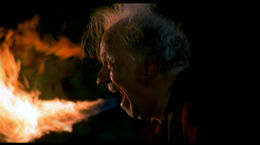 reveal the truly bizarre third-act revelation which explains the true nature of the house and its inhabitants, which is a shame since this is a film best experienced with as little preparation as possible. The unique atmosphere is unlike any other film ever made, veering from humorous fantasy to delicate eroticism to all-out monstrous horror, sometimes all within the same scene. Though his screen time adds up to only a few minutes, Welles makes a strong impression in his key role, while Hampshire shines in three very different roles (or is it more?) as the pure Nancy, the unearthly red-haired Euryale (who won't look anyone directly in the eye), and one of the prudish sisters. Cinematographer Gerry Fisher (who lensed the great See No Evil the same year) helps the director conjure up a wondrous palette of colors throughout the film, from the blood-red tavern interior to the weird purple, blue and oak-wood hues of Malpertuis, while composer Georges Delerue contributes a wonderful score with a beautifully romantic main theme.
reveal the truly bizarre third-act revelation which explains the true nature of the house and its inhabitants, which is a shame since this is a film best experienced with as little preparation as possible. The unique atmosphere is unlike any other film ever made, veering from humorous fantasy to delicate eroticism to all-out monstrous horror, sometimes all within the same scene. Though his screen time adds up to only a few minutes, Welles makes a strong impression in his key role, while Hampshire shines in three very different roles (or is it more?) as the pure Nancy, the unearthly red-haired Euryale (who won't look anyone directly in the eye), and one of the prudish sisters. Cinematographer Gerry Fisher (who lensed the great See No Evil the same year) helps the director conjure up a wondrous palette of colors throughout the film, from the blood-red tavern interior to the weird purple, blue and oak-wood hues of Malpertuis, while composer Georges Delerue contributes a wonderful score with a beautifully romantic main theme.
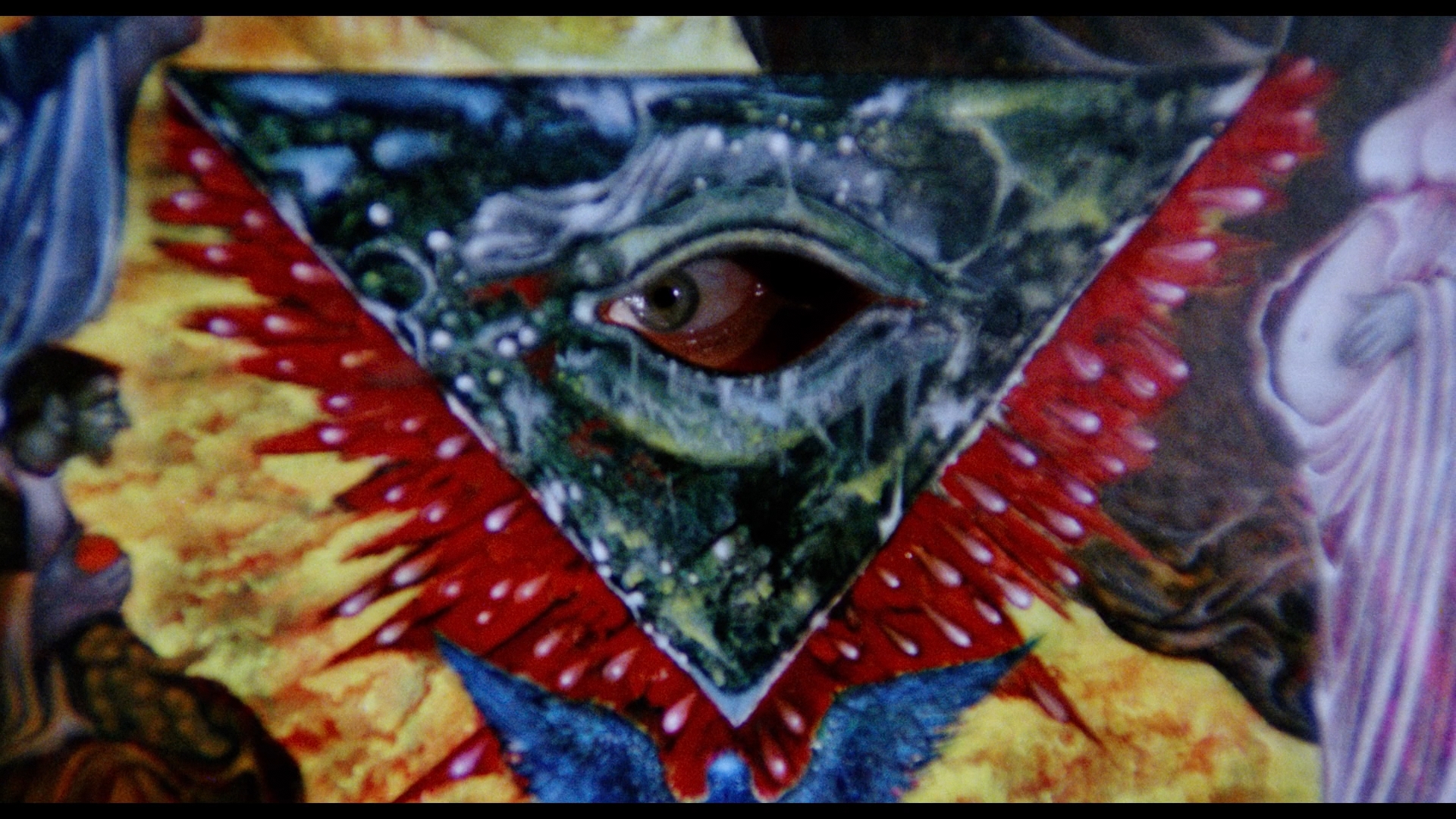 For example, the woodcut main titles are new (with different music),
For example, the woodcut main titles are new (with different music), 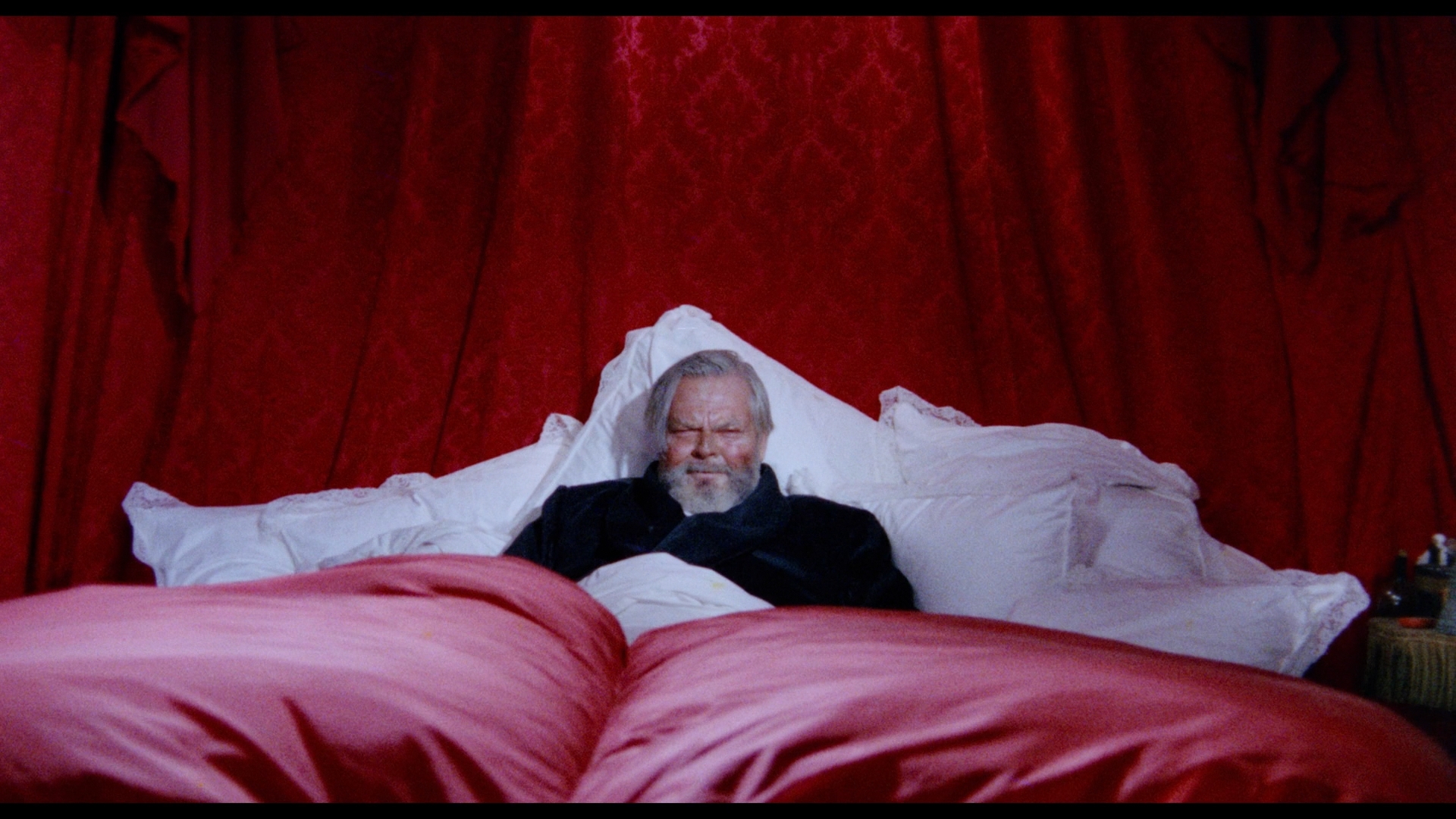 Jan's entrance is presented differently (without mystical overtones), the memorable tavern song by fetching French chanteuse Sylvie Vartan (aunt of Alias' Michael Vartan) is chopped up quite a bit, and Jan's fate when he looks Euryale in the eyes is conveyed only through sound rather than the literal imagery of the Cannes cut. To maintain continuity with the sound in a few instances, some brief freeze frames were also introduced. Both versions are worth watching with their own virtues and faults while offering quite a bit of alternate and exclusive footage; the director's cut is richer and dreamier, while the Cannes version is a more traditional Euro-horror experience. Both versions aren't perfect, particularly since the film chooses to end with one "gotcha!" moment too many that throws many viewers for a loop; still, it's a magnificent achievement and certainly a film whose allure hasn't diminished one bit over the years. The director and subject matter have often landed this one strictly in the horror category, though it's more correctly described as a dark gothic fantasy along the same lines as Mario Bava's near-simultaneous Lisa and the Devil, with which it shares a similar air of enchanted decrepitude as well as a nearly identical narrative structure. Just check out the opening and closing 15 minutes of each, and the parallels are unmistakable.
Jan's entrance is presented differently (without mystical overtones), the memorable tavern song by fetching French chanteuse Sylvie Vartan (aunt of Alias' Michael Vartan) is chopped up quite a bit, and Jan's fate when he looks Euryale in the eyes is conveyed only through sound rather than the literal imagery of the Cannes cut. To maintain continuity with the sound in a few instances, some brief freeze frames were also introduced. Both versions are worth watching with their own virtues and faults while offering quite a bit of alternate and exclusive footage; the director's cut is richer and dreamier, while the Cannes version is a more traditional Euro-horror experience. Both versions aren't perfect, particularly since the film chooses to end with one "gotcha!" moment too many that throws many viewers for a loop; still, it's a magnificent achievement and certainly a film whose allure hasn't diminished one bit over the years. The director and subject matter have often landed this one strictly in the horror category, though it's more correctly described as a dark gothic fantasy along the same lines as Mario Bava's near-simultaneous Lisa and the Devil, with which it shares a similar air of enchanted decrepitude as well as a nearly identical narrative structure. Just check out the opening and closing 15 minutes of each, and the parallels are unmistakable.
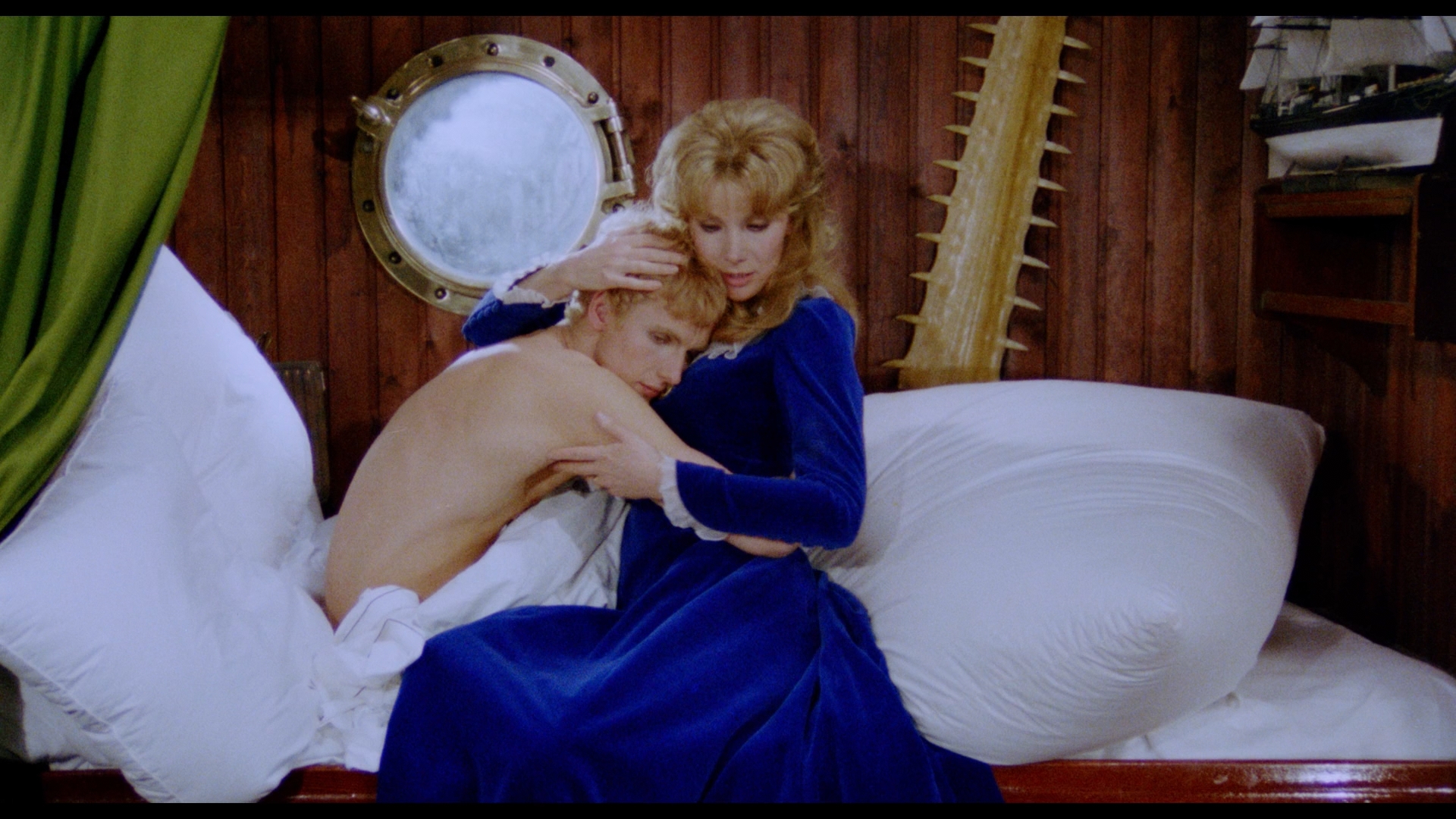 filming, the casting, the sad release history, and the intricate symbolism. It's a fascinating and fast-paced chat that barley
filming, the casting, the sad release history, and the intricate symbolism. It's a fascinating and fast-paced chat that barley 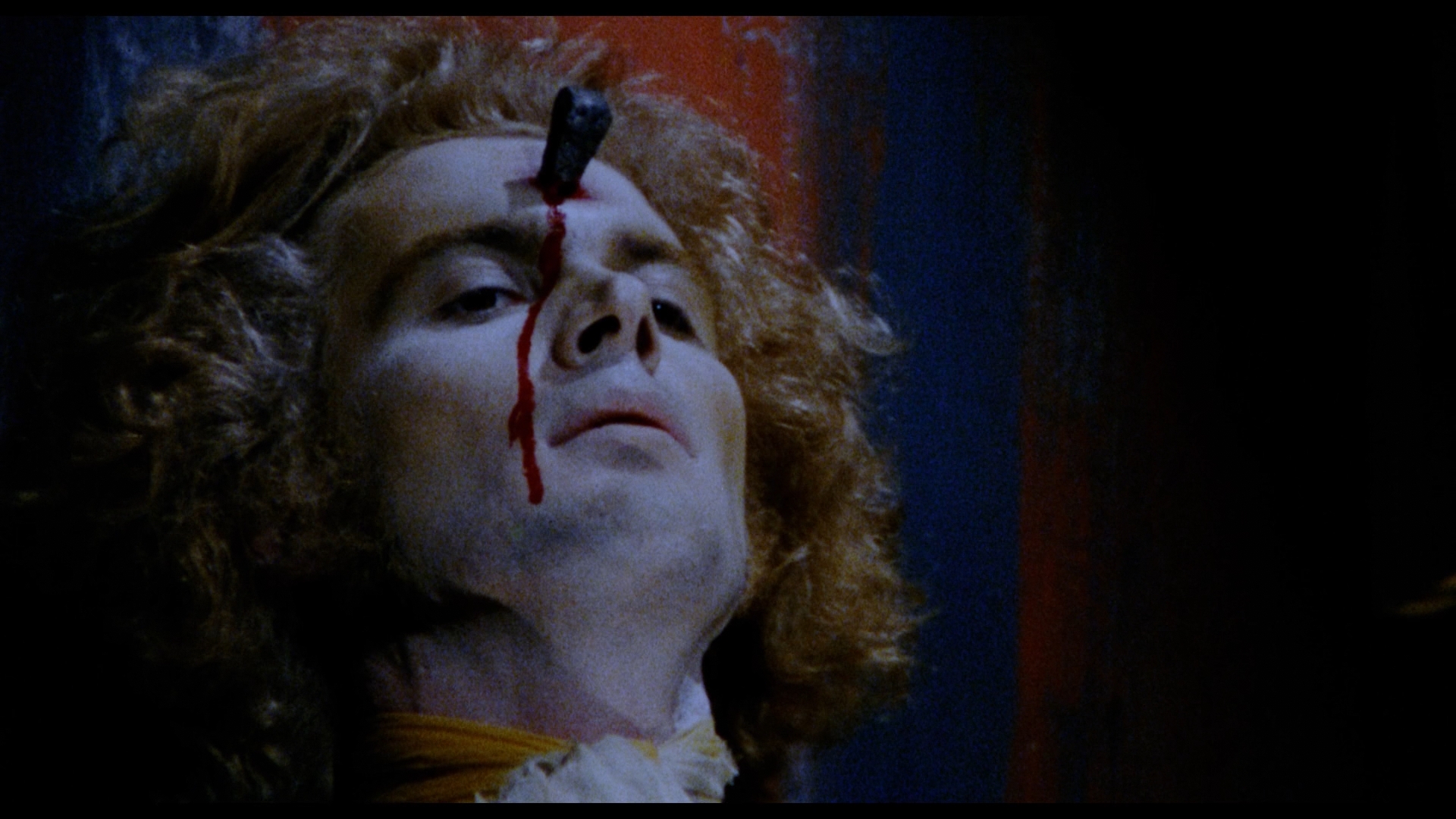 misses a beat throughout the entire running time. Then Kümel appears on-camera on disc two for "Reflections of Darkness," a lengthy 73m52s video chat with David Del Valle about his entire career of fantastic cinema and his influences including musicals and thrillers (making this a fine companion for the special edition of Daughters of Darkness). He also appears in small snippets in two other featurettes, "Orson Welles Uncut" (a 25m53s look at his participation in the film including numerous photos and film outtakes) and "One Actress, Three Parts" (11m44s), a new featurette with Hampshire talking about her role in the film and her approach to the character(s). Other extras include a short about the novel's author entitled "Jean Ray / John Flanders 1887-1964" (7m33s), a welcome intro to someone still virtually unknown outside Europe, as well as the original English language theatrical trailer. The two-disc set comes packaged with a booklet containing liner notes by Del Valle and a lengthy history of the film by Ernest Mathijs.
misses a beat throughout the entire running time. Then Kümel appears on-camera on disc two for "Reflections of Darkness," a lengthy 73m52s video chat with David Del Valle about his entire career of fantastic cinema and his influences including musicals and thrillers (making this a fine companion for the special edition of Daughters of Darkness). He also appears in small snippets in two other featurettes, "Orson Welles Uncut" (a 25m53s look at his participation in the film including numerous photos and film outtakes) and "One Actress, Three Parts" (11m44s), a new featurette with Hampshire talking about her role in the film and her approach to the character(s). Other extras include a short about the novel's author entitled "Jean Ray / John Flanders 1887-1964" (7m33s), a welcome intro to someone still virtually unknown outside Europe, as well as the original English language theatrical trailer. The two-disc set comes packaged with a booklet containing liner notes by Del Valle and a lengthy history of the film by Ernest Mathijs.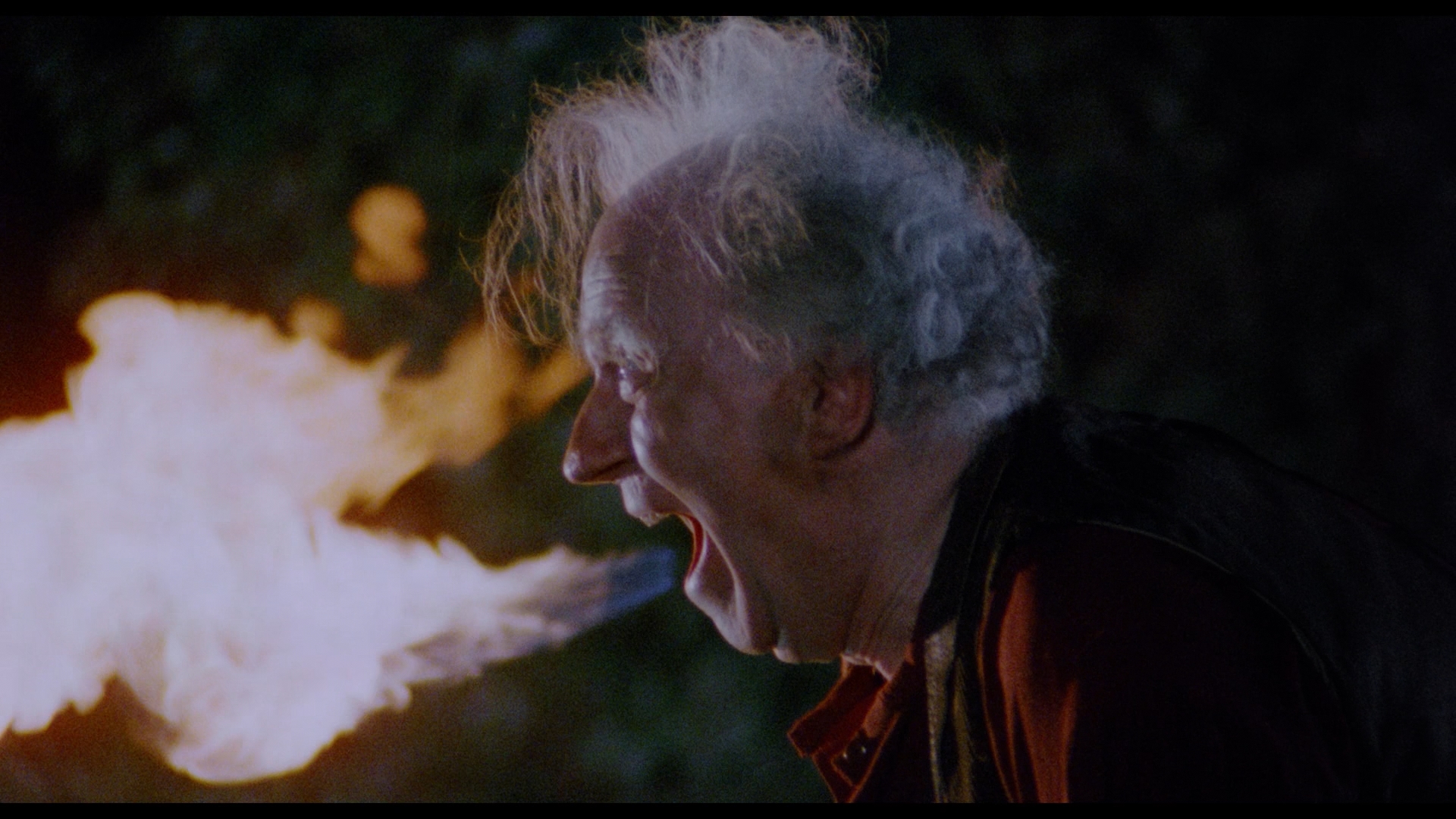 DVD. Once you get to the blazing cherry-red hues of Welles' bedroom, it's quite a stunner and a more impressive presentation than the film print that used to make the rounds. The LPCM 1.0 Dutch track sounds great and features improved optional English subtitles. The audio commentary, "Orson Welles Uncut," Susan Hampshire featurette, trailer (in Dutch with subtitles this time but
DVD. Once you get to the blazing cherry-red hues of Welles' bedroom, it's quite a stunner and a more impressive presentation than the film print that used to make the rounds. The LPCM 1.0 Dutch track sounds great and features improved optional English subtitles. The audio commentary, "Orson Welles Uncut," Susan Hampshire featurette, trailer (in Dutch with subtitles this time but 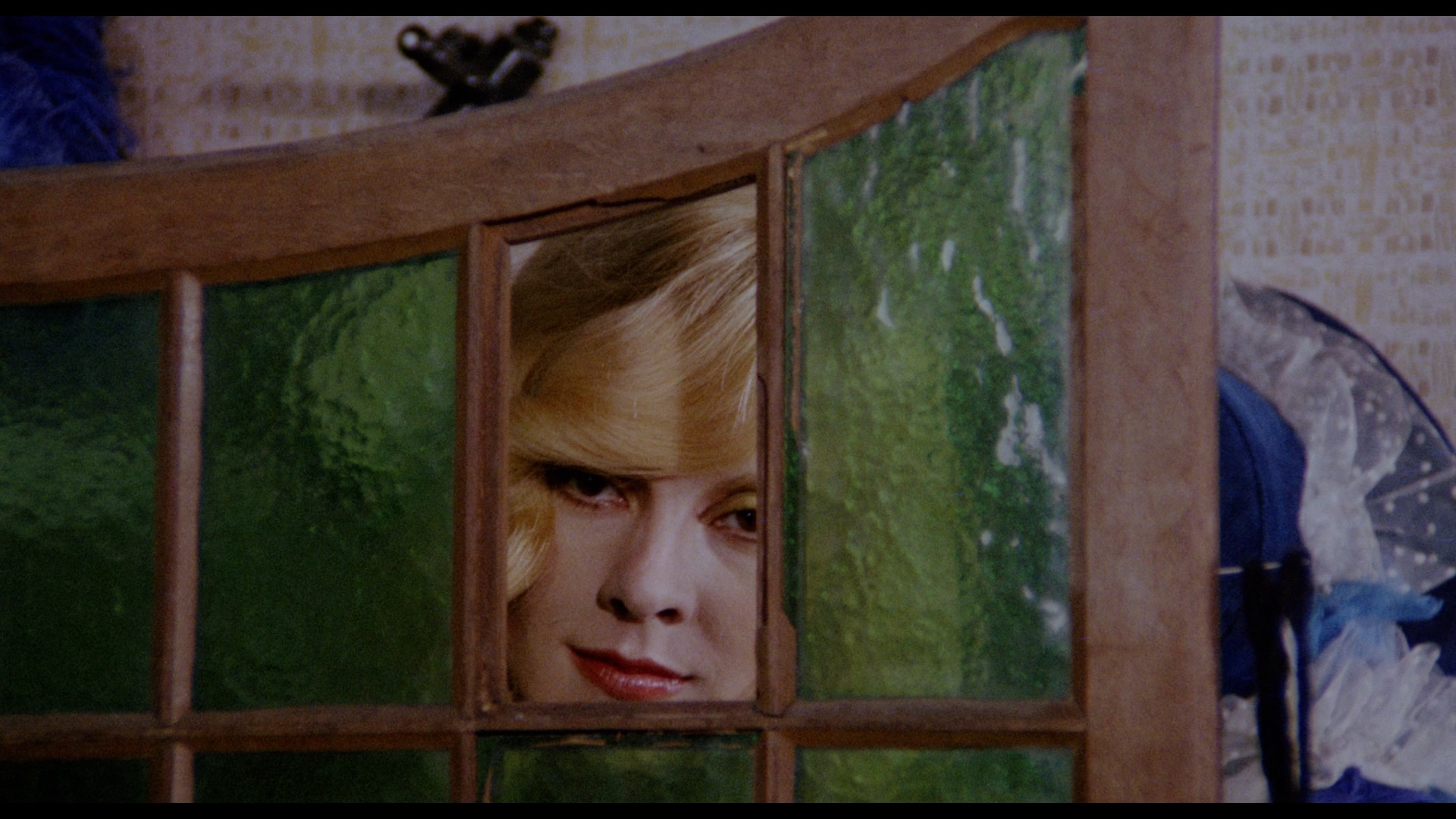 otherwise the same as the English one), and "Jean Ray / John Flanders" short are all ported over here along with the Cannes cut in English or French with optional English subtitles (in SD but at the correct film speed running 103 minutes and looking much better here). The prior Kümel interview is replaced here with a new one (19m43s) focusing strictly on this film, its adaptation process, and the tumultuous experience of getting it completed and shown. A new interview with Jonathan Rigby (26m) focuses on the film and novel's gothic attributes, Jean Ray's approach, the use of mythological elements, and its place in the European horror pantheon. The 2005 Flemish TV production "Malpertuis Archive" (37m22s) features Kümel, Carrière, producer Pierre Levie, and director of photography Gerry Fisher looking back at the "risky" production including the balancing of its wild combination of tones, the reception at Cannes, audience reactions over the years, the director's background in Flemish film and TV, and the technical approach to create an unreal cinematic experience. A 1971 black-and-white Belgian TV interview with Bouquet and Kümel (13m36s) features them talking about the film immediately after the film's completion including working with Welles and grappling with the themes and psychological motifs running throughout the project. In the new "Malpertuis Revisited" (4m54s), Kümel revisits the primary locations from the film including the bridge from the beginning and the primary house, while 1965's The Warden of the Tomb (36m43s) is a Kümel short based on Franz Kafka story with a very Last Year at Marienbad-style approach to aristocrats clashing over the stewardship of an ancestral burial site. A hefty and quite beautiful 80-page book features new essays by Lucas Balbo ("The French Connection"), Maria J. Pérez Cuervo ("The Trickster's Maze"), David Flint ("Malpertuis and the Golden Age of Transcendental Horror"), Willow Catelyn Maclay ("Post-War European Horror and the Labyrinth of Malpertuis"), and Jonathan Owen ("From Art House to Doom House: Harry Kümel's Short Films") covering everything from the international financing to a messy French non-release to thematic readings of its adaptation choices, commentary on European history and spiritualism, and much more.
otherwise the same as the English one), and "Jean Ray / John Flanders" short are all ported over here along with the Cannes cut in English or French with optional English subtitles (in SD but at the correct film speed running 103 minutes and looking much better here). The prior Kümel interview is replaced here with a new one (19m43s) focusing strictly on this film, its adaptation process, and the tumultuous experience of getting it completed and shown. A new interview with Jonathan Rigby (26m) focuses on the film and novel's gothic attributes, Jean Ray's approach, the use of mythological elements, and its place in the European horror pantheon. The 2005 Flemish TV production "Malpertuis Archive" (37m22s) features Kümel, Carrière, producer Pierre Levie, and director of photography Gerry Fisher looking back at the "risky" production including the balancing of its wild combination of tones, the reception at Cannes, audience reactions over the years, the director's background in Flemish film and TV, and the technical approach to create an unreal cinematic experience. A 1971 black-and-white Belgian TV interview with Bouquet and Kümel (13m36s) features them talking about the film immediately after the film's completion including working with Welles and grappling with the themes and psychological motifs running throughout the project. In the new "Malpertuis Revisited" (4m54s), Kümel revisits the primary locations from the film including the bridge from the beginning and the primary house, while 1965's The Warden of the Tomb (36m43s) is a Kümel short based on Franz Kafka story with a very Last Year at Marienbad-style approach to aristocrats clashing over the stewardship of an ancestral burial site. A hefty and quite beautiful 80-page book features new essays by Lucas Balbo ("The French Connection"), Maria J. Pérez Cuervo ("The Trickster's Maze"), David Flint ("Malpertuis and the Golden Age of Transcendental Horror"), Willow Catelyn Maclay ("Post-War European Horror and the Labyrinth of Malpertuis"), and Jonathan Owen ("From Art House to Doom House: Harry Kümel's Short Films") covering everything from the international financing to a messy French non-release to thematic readings of its adaptation choices, commentary on European history and spiritualism, and much more. RADIANCE (Blu-ray)
BARREL (DVD)
![]()